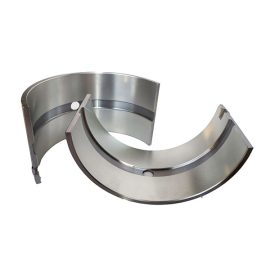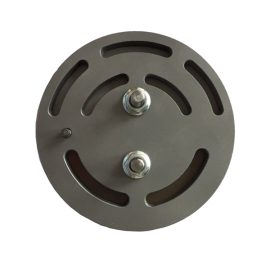The crosshead pin is a critical component in marine reciprocating compressors, and proper selection, installation, lubrication, and maintenance are essential for ensuring reliable and efficient operation in marine environments.
Compressor Crosshead Pin
The crosshead is made of nodular cast iron, and it has threads for connecting the crosshead pin and the piston rod. The crosshead pin is one component of the crosshead, which also includes slide blocks, wear resisting plates, sealing covers, and sleeves.
Crosshead pin reversal is the reversal of compression and tension loads at the crosshead pin to connecting rod bushing. Without proper reversing loads, the bushing won’t be sufficiently lubricated, and the bushing will fail. Pin reversal is defined by two components, degrees and percent, which represent the duration of the reversal and the magnitude.
You can monitor the crosshead vibration with an accelerometer to ensure that the crosshead to babbitt surface clearance is within acceptable limits. You can also use this analysis to confirm crosshead pin reversal and schedule machine shutdowns for repair.
Connecting Rod Connection: The crosshead pin serves as the connection point between the connecting rod and the piston rod. It allows the reciprocating motion generated by the piston to be transmitted to the connecting rod.
Guidance for Reciprocating Motion: As the name suggests, the crosshead pin moves within the crosshead guide, ensuring smooth and controlled reciprocating motion of the piston. This guidance is essential for maintaining proper alignment and reducing wear on components.
Load Distribution: The crosshead pin also helps distribute the load exerted by the piston evenly onto the connecting rod. This is crucial for preventing stress concentrations and ensuring the longevity of the compressor.
Material and Lubrication: The crosshead pin is typically made of hardened steel or other durable materials capable of withstanding high loads and repetitive motion. Proper lubrication is essential to reduce friction and wear between the pin and its mating components.
Maintenance and Inspection: Regular inspection and maintenance of the crosshead pin are essential to ensure optimal compressor performance and prevent unexpected failures. This may include checking for wear, proper lubrication, and addressing any issues with alignment.
Overall, the compressor crosshead pin is a small yet vital component in reciprocating compressors, playing a critical role in facilitating smooth and efficient operation.








